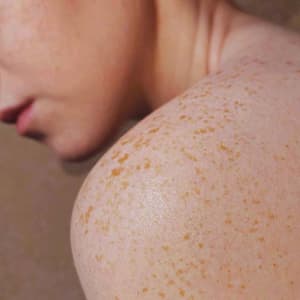 Dermabrasion
DermabrasionEverything You Need To Know About Treating Burns
From classifications to treatment options, a dermatologist and plastic surgeon break down exactly what you need to know about caring for burns.
From scalding water and hot pans to too much sun and more, burns happen. “Some 1.2 million individuals experience burns in the United States [every year], and burn injuries account for approximately 500,000 emergency department visits,” reports Samer Jaber, MD, a New York City-based board certified dermatologist and founder of Washington Square Dermatology. “Of those visits, 9 percent (45,000) require hospitalization.” Here, The AEDITION breaks down everything you need to know about treating burns and preventing scarring.
How Burns Are Classified
“First, second, and third-degree burns are categorized by the depth of the burn,” says Nima Naghshineh, MD, a board certified plastic and reconstructive surgeon in Pasadena, CA. Below is what you can generally expect from each:
- First-Degree Burns: Also known as epidermal burns, they only damage the epidermis. “They do not blister but are red and painful,” Dr. Nima explains. “However, over the next few days, the pain and the redness tend to subside.” First-degree burns are superficial and usually don’t require medical attention.
- Second-Degree Burns: Also known as partial-thickness burns, they move through the epidermis and part of the dermis (i.e. the second layer of skin). “These are extremely painful and cause the skin to look red, swell, and blister,” Dr. Jaber says. They typically take one to two weeks to heal.
- Third-Degree Burns: Also known as full-thickness burns, they involve the entire thickness of the skin and are often less painful because of the nerve damage involved. After the third-degree trauma, the skin looks “dry, pale, charred, white, or black,” Dr. Jaber explains. Treatments and recovery vary depending on the extent of skin, nerve, hair follicle, and sweat gland damage involved.
Finally, fourth-degree burns represent the most severe and damaging burn injuries. “These burns damage fat in the body, muscles, blood vessels, bones, and joints,” Dr. Jaber says. Once the healing process begins, patients receive intensive care to prevent infection. Later, the doctor will explore skin grafting options, since the burned tissue will not regenerate on its own.
Additional Burn Classifications
Beyond degree, burns are further broken down into classifications such as thermal, electrical, and chemical. “The importance of these categories is that specific treatments are often needed based on the type of the burn,” Dr. Nima says. “For example, certain chemical burns need specific neutralizing treatments. And there are additional considerations to look at for electrical burns that include deeper tissue burns that are not visible.”
Thermal burns range from scalds from boiling water to contact injuries, such as direct contact with a hot surface. Electrical burns, meanwhile, happen when the skin makes contact with heat-making electrical currents. “The severity of the injury depends on the current path, the body area affected, and the strength and duration of the electric current,” Dr. Jaber notes. Chemical burns occur when someone comes into contact with burn-causing chemicals. The severity of this injury depends on the amount of skin exposure.
How to Treat Burns
After a burn, it is critical to know when to seek help. While small, superficial burns can be treated from home, burns that cover larger areas require medical attention. Depending on the severity, IV fluids (to treat dehydration), antibiotics, tissue removal, and/or skin grafting may be needed.
Treating First-Degree Burns
“Simple burns like a sunburn or a first-degree burn is easily treated at home, if there are small enough areas,” Dr. Nima says. First-degree burns are commonly treated by “cooling the skin with cold compresses and using acetaminophen or ibuprofen for pain control,” Dr. Jaber explains. Applying a fragrance-free moisturizer, like aloe vera, honey, or Vaseline, can improve wound healing.
Treating Second-Degree Burns
With second-degree burns, blistering accompanies the pain and redness. “You should not pop the blisters, if possible,” Dr. Nima cautions. “The healing will occur on its own.” If there are raw areas, your doctor will prescribe antibiotic ointments or topical treatments, such as Silvadene, to help with scarring and preventing infection. Deeper second-degree burns carry a low to moderate risk of scarring, and they could potentially result in discoloration or pigmentation. “As a general rule, you should keep any burn area out of the sun and treat it according to medical advice,” he shares. “If excess scarring or thick scarring is a concern, silicone sheets and gels will reduce the damage.”
Treating Third- and Fourth-Degree Burns
Third-degree and fourth-degree burns result in thick, contracted scars. There are a few options to address the appearance and functionality of the scarring, including removing the discoloration and placing healthy tissue on the site. A more in-depth procedure replaces the contracted scars and rearranges existing tissue to allow for more give. The latter surgery is needed if a burn resides at a joint site (think: the elbow or knee) to restore function and range of motion. In more advanced and complex cases, tissue from non-burned areas can be transferred to the burned areas to replace the scar altogether. These procedures require microsurgery and significant healing time.
The Takeaway
Once a burn is fully healed, the resulting scar can be treated to improve tone and texture. “There are many treatments to improve scarring, including lasers like Fraxel, fractionated C02, or intralesional steroid injection,” Dr. Jaber says. Consulting with a board certified dermatologist or plastic surgeon will ensure you get the best treatment for your condition.
More Related Articles
Related Procedures

AI Plastic Surgeon™
powered by'Try on' aesthetic procedures and instantly visualize possible results with The AI Plastic Surgeon, our patented 3D aesthetic simulator.

